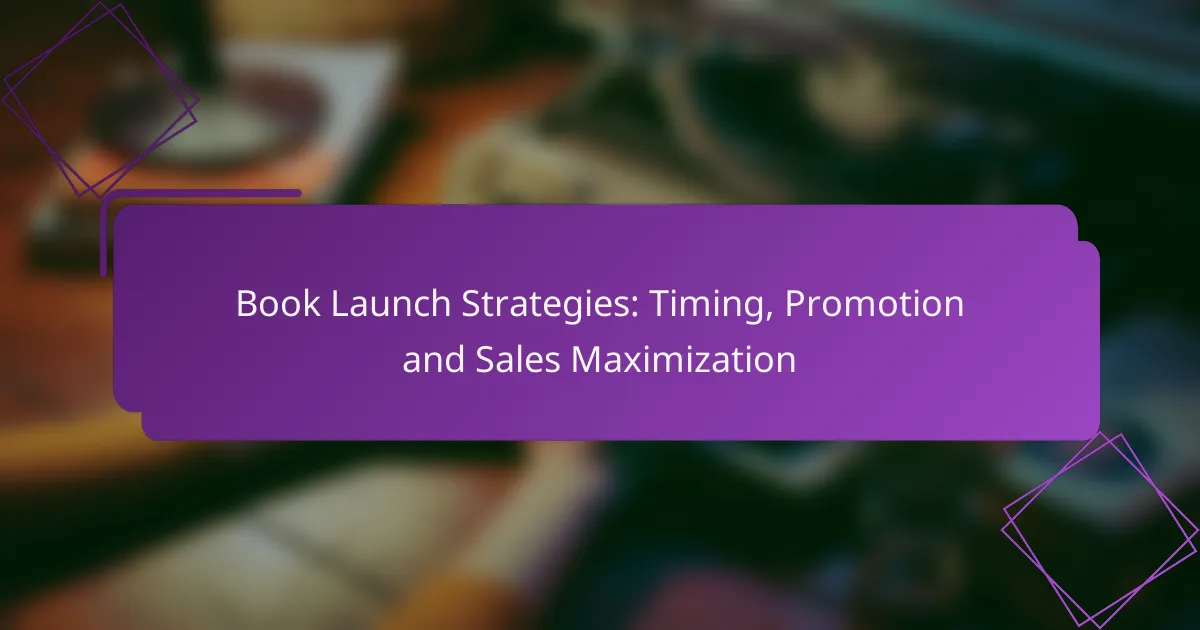A well-crafted marketing plan is essential for e-commerce success, as it outlines clear objectives that align with your overall business strategy. By implementing effective tactics such as content marketing, social media advertising, and email campaigns, you can drive traffic and engage customers. Execution involves careful planning, including timelines, budget allocation, and performance tracking, ensuring that your marketing goals are achieved efficiently.

How to set marketing objectives for e-commerce?
Setting marketing objectives for e-commerce involves defining clear, measurable goals that align with your business strategy. These objectives guide your marketing efforts and help track progress towards achieving desired outcomes.
SMART objectives framework
The SMART framework stands for Specific, Measurable, Achievable, Relevant, and Time-bound. This approach ensures that your marketing objectives are clear and actionable, making it easier to evaluate success. For example, instead of saying “increase sales,” a SMART objective would be “increase online sales by 20% in the next quarter.”
Sales growth targets
Sales growth targets are essential for measuring the effectiveness of your marketing strategies. Aim for realistic growth percentages based on historical data and market trends. For instance, setting a target of 15-25% growth over the next year can provide a solid benchmark for your e-commerce initiatives.
Consider seasonal trends and promotional events when establishing these targets. Aligning your sales goals with peak shopping periods can enhance your chances of achieving them.
Customer acquisition goals
Customer acquisition goals focus on attracting new customers to your e-commerce platform. Establish a target number of new customers to acquire within a specific time frame, such as gaining 500 new customers in six months. This helps prioritize marketing efforts and budget allocation.
Utilize various channels, such as social media, email marketing, and paid advertising, to reach potential customers. Monitor the cost per acquisition (CPA) to ensure your strategies remain cost-effective.
Brand awareness metrics
Brand awareness metrics help gauge how well your e-commerce brand is recognized in the market. Common metrics include website traffic, social media engagement, and brand recall surveys. Aim for a measurable increase in these metrics over time, such as a 30% rise in social media followers within three months.
Utilize tools like Google Analytics and social media insights to track these metrics. Regularly assess your brand awareness strategies to ensure they resonate with your target audience and adjust as necessary.

What tactics are effective for e-commerce marketing?
Effective e-commerce marketing tactics include content marketing, email campaigns, social media advertising, and search engine optimization. These strategies help drive traffic, engage customers, and ultimately increase sales.
Content marketing strategies
Content marketing focuses on creating valuable, relevant content to attract and engage a target audience. This can include blog posts, videos, infographics, and product guides that address customer needs and interests.
To implement a successful content marketing strategy, consider using storytelling techniques and incorporating SEO best practices to enhance visibility. Regularly updating content can keep your audience engaged and improve search rankings.
Email marketing campaigns
Email marketing remains one of the most effective tactics for e-commerce, allowing direct communication with customers. Personalized emails, such as product recommendations and special offers, can significantly boost engagement and conversion rates.
When designing email campaigns, segment your audience based on behavior and preferences. Aim for a consistent sending schedule and use A/B testing to refine subject lines and content for better results.
Social media advertising
Social media advertising leverages platforms like Facebook, Instagram, and TikTok to reach potential customers. These ads can be highly targeted based on user demographics, interests, and behaviors, making them effective for driving traffic to your e-commerce site.
To maximize the impact of social media ads, create visually appealing content and include clear calls to action. Monitor performance metrics and adjust your strategy based on what resonates most with your audience.
Search engine optimization
Search engine optimization (SEO) is crucial for improving your e-commerce site’s visibility on search engines. By optimizing product descriptions, images, and site structure, you can attract organic traffic and enhance user experience.
Focus on keyword research to identify terms your target audience uses. Regularly update your content and ensure your website is mobile-friendly, as these factors can significantly influence search rankings and user engagement.

How to execute a marketing plan?
Executing a marketing plan involves a structured approach that includes setting timelines, defining team responsibilities, allocating budgets, and tracking performance. Each of these components is crucial for ensuring that marketing objectives are met effectively and efficiently.
Timeline creation
Creating a timeline is essential for organizing the execution of a marketing plan. Start by outlining key milestones and deadlines for each tactic, ensuring that they align with overall marketing goals. A typical timeline might span from a few weeks to several months, depending on the complexity of the campaign.
Consider using project management tools to visualize the timeline, which can help in adjusting schedules as needed. Regularly review the timeline to stay on track and make necessary adjustments based on progress and feedback.
Team responsibilities
Clearly defining team responsibilities is vital for smooth execution. Assign specific roles to team members based on their strengths and expertise, such as content creation, social media management, or data analysis. This clarity helps prevent overlap and ensures accountability.
Regular team meetings can facilitate communication and allow for quick resolution of any issues that arise. Establishing a clear chain of command can also streamline decision-making processes and enhance collaboration.
Budget allocation
Budget allocation involves distributing financial resources across various marketing activities to maximize impact. Start by estimating costs for each tactic, including advertising, tools, and personnel. A common approach is to allocate a percentage of projected revenue or a fixed amount based on past campaigns.
Monitor spending closely to avoid overshooting the budget. Adjust allocations as necessary based on performance metrics and return on investment (ROI) to ensure funds are directed toward the most effective strategies.
Performance tracking methods
Performance tracking methods are essential for measuring the success of a marketing plan. Utilize key performance indicators (KPIs) such as conversion rates, website traffic, and customer engagement metrics to evaluate effectiveness. Tools like Google Analytics or social media insights can provide valuable data.
Regularly analyze performance data to identify trends and areas for improvement. Establish a routine for reporting results to stakeholders, which can help in making informed decisions for future marketing efforts.

What are the key performance indicators for e-commerce marketing?
Key performance indicators (KPIs) for e-commerce marketing are measurable values that demonstrate how effectively a business is achieving its marketing objectives. These metrics help businesses assess their performance and make informed decisions to optimize their strategies.
Conversion rate analysis
Conversion rate analysis measures the percentage of visitors who complete a desired action, such as making a purchase. A higher conversion rate indicates effective marketing and website design, while a lower rate may signal issues that need addressing.
To calculate the conversion rate, divide the number of conversions by the total number of visitors and multiply by 100. For example, if 1000 visitors lead to 50 purchases, the conversion rate is 5%. Regularly monitoring this metric can help identify trends and areas for improvement.
Customer lifetime value
Customer lifetime value (CLV) estimates the total revenue a business can expect from a single customer throughout their relationship. Understanding CLV helps businesses allocate resources effectively and tailor marketing strategies to maximize profitability.
To calculate CLV, multiply the average purchase value by the average purchase frequency and the average customer lifespan. For instance, if a customer spends $100 per purchase, buys twice a year, and remains a customer for five years, their CLV would be $1000. Aim to increase CLV through customer retention strategies and upselling.
Return on ad spend
Return on ad spend (ROAS) measures the revenue generated for every dollar spent on advertising. This KPI helps businesses evaluate the effectiveness of their advertising campaigns and optimize their marketing budgets.
To calculate ROAS, divide the revenue generated from ads by the total ad spend. For example, if a campaign generates $5000 in revenue with a $1000 ad spend, the ROAS is 5:1. Aiming for a ROAS of at least 4:1 is often considered a good benchmark for profitability.
Website traffic metrics
Website traffic metrics provide insights into the number of visitors, their behavior, and engagement levels on an e-commerce site. Key metrics include unique visitors, page views, and bounce rate, which can indicate the effectiveness of marketing efforts and website usability.
For example, a high bounce rate may suggest that visitors are not finding what they expect, prompting a review of landing pages. Tools like Google Analytics can help track these metrics, allowing businesses to make data-driven decisions to enhance user experience and drive conversions.

How to adjust marketing tactics based on performance?
Adjusting marketing tactics based on performance involves analyzing data to identify what works and what doesn’t, then refining strategies accordingly. This iterative process helps optimize campaigns, improve ROI, and align efforts with business objectives.
Data analysis techniques
Effective data analysis techniques include tracking key performance indicators (KPIs) such as conversion rates, customer acquisition costs, and engagement metrics. Utilizing tools like Google Analytics or social media insights can provide valuable data on audience behavior and campaign effectiveness.
Consider segmenting data by demographics, geography, or behavior to uncover trends that inform your adjustments. For example, if a specific demographic shows higher engagement, you might allocate more resources to target that group.
Feedback loops
Implementing feedback loops involves regularly collecting insights from customers and stakeholders to gauge the effectiveness of your marketing tactics. Surveys, focus groups, and social media interactions can provide qualitative data that complements quantitative analysis.
Establish a routine for reviewing feedback and integrating it into your strategy. For instance, if customers express dissatisfaction with a product feature, consider adjusting your messaging or product offerings to better meet their needs.
A/B testing strategies
A/B testing, or split testing, is a method where two variations of a marketing element are compared to determine which performs better. This could involve testing different headlines, images, or calls to action in your email campaigns or landing pages.
To conduct effective A/B tests, ensure you have a clear hypothesis and a sufficient sample size for reliable results. Aim for a testing period of at least one to two weeks to account for variations in user behavior. Analyze the results to make data-driven decisions on which tactic to implement moving forward.



